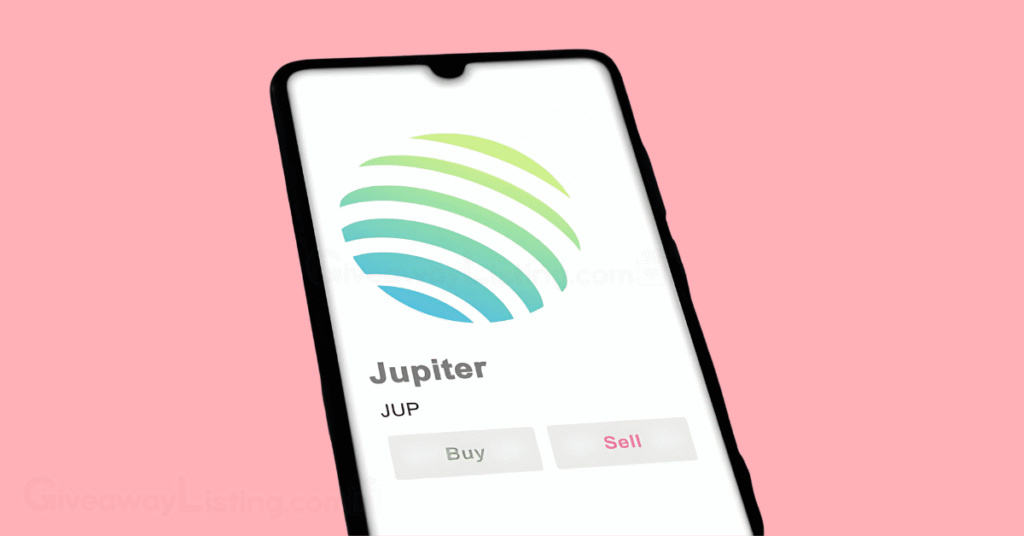Jupiter Airdrop: What You Need to Know
The Jupiter airdrop, known as “Jupuary,” has become a standout event in Solana. It’s not just another token giveaway; it’s a massive, community-focused distribution that rewards active users of the Jupiter platform.
This guide is your go-to source for making sense of it all. We will be looking at some Jupiter airdrop key facts and statistics, offering 8 ways to trade your JUP airdrop tokens, and answering common questions about the Jupiter airdrop. We’ll also check out the real Jupiter airdrop page, Jupiter airdrop rounds 2 and 3.
All the information here is current as of December 2025.
Jupiter Airdrop Key Facts & Statistics as of December 2025

The numbers behind the Jupiter project and its token distributions are impressive, placing it among the best airdrops in recent memory. From billions of tokens in total supply to the millions of dollars distributed in a single event, the scale is massive.
- The total supply of JUP is capped at 10 billion tokens, though the community approved a plan to reduce it.
- The first “Jupuary” airdrop in 2024 distributed 1 billion JUP tokens to the community.
- Nearly 955,000 wallets qualified for that first airdrop event.
- In January 2025, the airdrop distributed another 700 million JUP tokens.
- This second airdrop was valued at over $616 million at the time of distribution.
- The 2025 event saw 440 million JUP tokens allocated specifically to active swap users and expert traders.
- An additional 60 million JUP tokens were reserved for users who staked JUP and participated in governance votes.
- A separate pool of 200 million JUP tokens, nicknamed “Carrots,” was set aside for growth incentives and community rewards.
- A community vote to approve two more years of airdrops passed with an 87% majority.
- The top tier of swap users in the 2025 event received 20,000 JUP per wallet.
- To ensure fair distribution in 2025, over 750,000 wallets were filtered out for suspected bot-like behavior.
- Jupiter maintains a 50/50 tokenomics split, with half of the total supply dedicated to the community.
8 Ways to Trade Your Jup Airdrop Tokens in 2025

The annual Jupiter airdrop, or “Jupuary,” is a yearly event that rewards the platform’s community with a substantial amount of JUP tokens. Getting these free tokens is the first part; the next real question is what to do next.
Just letting them sit in your wallet is one option, but for those looking to be more active, there are several moves you can make to potentially grow your airdropped rewards or put them to work within the Solana ecosystem.
Here are eight distinct ways to handle your JUP airdrop tokens.
1. HODL for the Long Haul
The “Hold On for Dear Life” approach is for those who believe in Jupiter’s long-term vision. This isn’t just wishful thinking; it’s a position based on Jupiter’s solid standing as a key liquidity aggregator on Solana. The platform consistently processes massive trading volumes and continually adds new features, such as perpetual futures and the Ape terminal, for memecoin trading.
Holding your JUP also means you’re betting on the team’s continued success and the growth of the entire Solana ecosystem. Additionally, with community-approved token burns designed to reduce the total supply, holding the token could become more rewarding if scarcity drives up its value over time.
2. Stake for Passive Rewards and Governance Power
Staking your JUP is one of the smartest moves you can make. It’s not just about earning a passive return; it’s about actively participating in the Jupiter DAO and setting yourself up for future rewards. Through the Active Staking Rewards program, you earn more JUP tokens by both staking and voting on governance proposals.
This is a double-win. You generate yield on your airdropped assets and you strengthen your position for the next Jupuary. Stakers and active voters have historically been a specific category for airdrop eligibility, so by participating, you’re essentially farming the next round. It’s a direct way to show you’re a committed community member, not just a short-term seller.
3. The “Sell a Portion, Keep a Portion” Tactic
You don’t have to go all or nothing. A balanced approach involves selling a part of your airdropped JUP while holding onto the rest. This allows you to lock in some profits immediately, which you can use to cover transaction fees, purchase a new game, or cash out.
By keeping the remaining JUP, you still have exposure to any future price increases. You can hold it or, even better, stake the remainder to earn rewards and qualify for the next airdrop. This strategy gives you the best of both worlds: immediate gains and long-term potential.
4. Provide Liquidity on a DEX
For the more DeFi-savvy, providing liquidity is an excellent way to put your JUP to work. This involves pairing your JUP with another asset, like SOL or a stablecoin like USDC, and depositing them into a liquidity pool on a decentralized exchange.
By doing this, you become a liquidity provider (LP). Every time someone makes a trade using that pool, you earn a small percentage of the trading fees. This turns your static airdrop into an active, yield-generating asset. Be aware of impermanent loss, a risk where the value of your deposited assets may decrease compared to simply holding them.
5. Swap for Other Promising Solana Tokens
If you’ve been eyeing other projects on Solana, your JUP airdrop could be your ticket in. You can easily use the Jupiter platform itself to swap your JUP for other tokens you believe have high growth potential.
This move is a vote of confidence in another part of the ecosystem, funded by your reward from Jupiter. Since Jupiter is an aggregator, you’re almost certain to get a good swap rate, making the process efficient and cost-effective.
6. Use Dollar-Cost Averaging to Exit
Timing the market is nearly impossible. Instead of trying to sell your entire JUP stack at the absolute peak, you can use a Dollar-Cost Averaging (DCA) strategy to sell. This means selling off your tokens in smaller, fixed amounts over a set period.
This approach smooths out your average selling price and reduces the stress of trying to time a volatile market. If the price increases after your first sale, you still have more to sell at the higher price. If it goes down, you already sold some at a better price. The Jupiter platform even features a built-in DCA tool, making it simple to automate this process.
7. Use JUP as Collateral for Lending/Borrowing
If you need some cash but don’t want to sell your JUP because you think it will appreciate in value, you can use it as collateral on a DeFi lending platform. By depositing your JUP, you can borrow stablecoins against its value.
This provides you with immediate liquidity to use for other investments or expenses, while retaining ownership of your JUP. It’s a decisive move, but it comes with risk. If the price of JUP drops significantly, your position could be liquidated to cover the loan; therefore, it’s essential to manage your borrowing levels carefully.
8. Use Tokens to Farm the Next Airdrop
Use your current airdrop to guarantee you qualify for the next one. The Jupiter team has been clear that they reward active, long-term users. Staking your JUP and voting in the DAO are two of the most direct ways to signal your commitment.
Beyond staking, you should continue to use Jupiter’s core features. Regularly use the swap function, try out the bridge, place a few limit orders, and dabble in perpetuals trading. Each action helps build your on-chain history as a genuine user, which is exactly what the team looks for when taking the next eligibility snapshot.
Where to Find the Jupiter Airdrop Checker?

The Jupiter Airdrop Checker is a purpose-built tool that allows you to verify your eligibility for the Jupuary airdrop securely. Its primary function is simple: you connect your wallet, and it tells you if you’ve qualified for the token distribution. Using the official checker is critical for security, as the excitement surrounding big airdrops often attracts scammers who create fake, look-alike sites to trick users into signing malicious transactions and draining their wallets.
The only safe place to find the airdrop checker is on the official Jupiter website. The exact URL is typically announced through Jupiter’s official channels right before the claim period begins. Your best bet is to always get directly to the site by following a link from Jupiter’s verified Twitter (X) account or their official Discord server. Never click on links from direct messages, suspicious emails, or unverified social media posts.
What are the Jupiter Airdrop Criteria?

With “Jupuary” becoming an annual tradition, a predictable pattern has emerged in the airdrop criteria. While the Jupiter team refines its methods each year to better identify and reward genuine community members, the core pattern remains the same: reward people who use the platform and contribute to its ecosystem. The goal is to filter out the bots and airdrop farmers and give more to the real “cats.”
The eligibility requirements are typically broken down into a few key groups, each with its own set of standards.
- Swap Users: To qualify, you need to demonstrate consistent trading activity. In past airdrops, this meant having a minimum swap volume, often $1,000 or more, within the snapshot period. They also check for consistent monthly usage to weed out those who only show up to farm the airdrop. Specific activities result in disqualification, such as making swaps under $5, engaging in circular trading, or swapping between stablecoins to generate volume.
- Expert Traders: This category is for users who go beyond simple swaps. The team seeks engagement with Jupiter’s more advanced products, including perpetual trading, limit orders, and the dollar-cost averaging (DCA) tool. This group is smaller but often receives a larger share of the tokens per wallet, rewarding their deeper use of the platform’s features.
- Stakers and Voters: Eligibility is directly tied to the Active Staking Rewards (ASR) system. It’s not just about how much JUP you stake, but also about your participation in governance. In the 2025 airdrop, special bonuses were offered to “Super Voters” and “Super Stakers.” This heavily incentivizes holding JUP and having a say in the DAO’s future.
- Community Contributors: Jupiter also sets aside tokens for “Good Cats”—community members who provide value by helping others on social media, writing content, or actively participating in community calls. This is a more subjective category, but it highlights the team’s values of social contributions alongside on-chain activity.
Jupiter Airdrop Claim Date Details

The timing of the Jupiter airdrop has become quite predictable, following a clear annual schedule around January, which gave rise to the “Jupuary” moniker. Based on previous events, the claim period for the airdrop consistently kicks off in the latter half of January. For example, the first airdrop claim went live on January 31, 2024. The second major airdrop in 2025 followed a similar pattern, with the claim becoming available in mid-to-late January, strategically timed around Jupiter’s annual community conference, “Catstanbul.”
The snapshot date, which marks the cutoff point for all qualifying activity, differs from the claim date. The snapshot is taken months in advance, giving the team time to check the data and filter out ineligible wallets. For both the 2024 and 2025 airdrops, the snapshot period concluded on November 2 of the preceding year. This means any activity after that date did not count toward that Jupuary’s allocation, but would instead count toward the next one.
Once the claim goes live, there’s no need to panic and rush. The Jupiter team provides a generous window for eligible users to claim their tokens, which helps prevent network congestion and ensures everyone has a fair opportunity. Historically, the claim period has remained open for three months, ending on a specific date, such as the end of April or July.
What is the Real Jupiter Airdrop Page?

Large airdrops, such as those from Jupiter, are prime targets for scammers. They create convincing fake websites, Twitter profiles, and Discord servers designed to do one thing: trick you into connecting your wallet and signing a transaction that drains your funds. That’s why knowing the real, official Jupiter pages isn’t just helpful; it’s essential for keeping your assets safe. Always double-check URLs and follower counts before clicking anything. A single typo in a web address could lead you to a phishing site.
To stay safe, only get your information from Jupiter’s official sources. Bookmark these pages and ignore any links sent through direct messages or posted by random accounts. Scammers are experts at creating a sense of urgency, but a legitimate airdrop will always have a long claim window. There is no rush. Using a secure and reputable wallet is also a critical line of defense.
| Social Media Platform | Username / URL |
|---|---|
| Website | jup.ag |
| Airdrop Page | lfg.jup.ag |
| X (Twitter) | @JupiterExchange |
| Discord | discord.gg/jup |
When Was The Jupiter Airdrop Round 2?

The Jupiter Airdrop round 2 took place in January 2025. This was the second major annual token distribution from the Jupiter team, following the first one in January 2024. This second round was a significant event, dropping 700 million JUP tokens, valued at over $600 million, into the wallets of the community. It firmly established “Jupuary” as a yearly crypto tradition to look forward to.
The eligibility for Round 2 was based on user activity during a snapshot period that ran from early November 2023 to early November 2024. This year-long window was designed to reward consistent, long-term users rather than those who just showed up at the last minute.
The criteria were more refined than in the first round, with specific tiers for “Swap Users” based on their trading volume, and separate, often larger, allocations for “Expert Traders” who used Jupiter’s advanced features. The team also cracked down on bots, filtering out over 750,000 wallets to ensure the rewards went to real people.
A key part of Round 2 was the focus on community participation beyond just trading. Staking JUP and actively voting in the Jupiter DAO were major factors in qualifying for airdrop allocations, with bonuses for the most engaged voters and stakers. Now that Round 2 is over, be extremely cautious of any site or social media post claiming you can still claim from it. Scammers love to use old news to create new traps.
For any future distributions, including the expected Round 3, please make sure you get your information from the official Jupiter channels listed above.
When is the Jupiter Airdrop Round 3?

Following the established “Jupuary” pattern and a community vote that passed with an 87% approval rating for two more years of airdrops, the Jupiter Airdrop Round 3 is widely expected to take place in January 2026. This means that if you’re reading this in December 2025, you are right in the middle of the qualification period. The snapshot for determining eligibility is likely running now, having started around November 2024, and is expected to end in November 2025.
To position yourself for Round 3, the playbook is clear from past events. The Jupiter team rewards genuine, long-term engagement. This means consistently using the platform for swaps, setting limit orders, and maybe trying the DCA or perpetuals tools. More importantly, staking your JUP tokens and actively participating in DAO governance votes is a huge factor.
These actions demonstrate your commitment to the ecosystem and have historically been a primary criterion for receiving a larger share of the airdrop. As always, be extremely careful and get your news only from official Jupiter channels to avoid scams promising early access or a special Round 3 claim link.
Jupiter Airdrop: Final Thoughts

And that’s the complete picture of the Jupiter airdrop. We’ve reviewed the key facts and statistics, explored various ways to trade your JUP tokens, and pointed you to the official airdrop checker.
We also broke down the specific criteria for qualifying, the claim date details, how to spot the real Jupiter pages, and what to know about Round 2 and the upcoming Round 3. Jupiter’s annual event is more than just a giveaway; it’s a great part of its community-first approach, setting it apart from many other projects.
For those keen on finding the next big crypto event, keeping an eye on lists of the best airdrops is a great start.
Here are some of the most interesting facts from our discussion:
- The January 2025 airdrop distributed 700 million JUP tokens, valued at over $616 million.
- The very first Jupuary airdrop qualified nearly 955,000 unique wallets.
- In the second round, the team filtered out more than 750,000 wallets suspected of being bots.
- A community vote to continue the annual airdrops passed with a massive 87% approval.
- The claim window for the airdrop is typically a generous three months long.
This content was last updated in December 2025.

